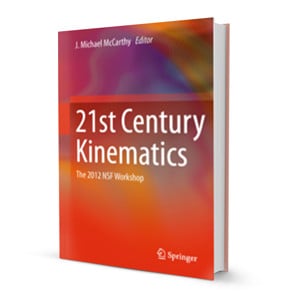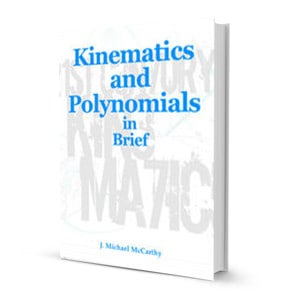Geometric Design of Linkages
by J. Michael McCarthy, Gim Song Soh
eBook, hardcover, softcover (available on Springer)
The only book that brings together the kinematic synthesis theory of planar, spherical and spatial kinematic chains. This mathematical theory forms the foundation of numerical methods for dimensional synthesis of the articulated skeletons of modern machine, manipulator and robotic systems.
This book is an introduction to the mathematical theory of design for articulated mechanical systems known as linkages. The focus is on sizing mechanical constraints that guide the movement of a workpiece, or end effector, of the system. The function of the device is prescribed as a set of positions to be reachable by the end effector; and the mechanical constraints are formed by joints that limit relative movement. The goal is to find all the devices that can achieve a specific task. Formulated in this way the design problem is purely geometric in character. Robot manipulators, walking machines, and mechanical hands are examples of articulated mechanical systems that rely on simple mechanical constraints to provide a complex workspace for the end effector.
This new edition includes research results of the past decade on the synthesis of multiloop planar and spherical linkages, and the use of homotopy methods and Clifford algebras in the synthesis of spatial serial chains. One new chapter on the synthesis of spatial serial chains introduces the linear product decomposition of polynomial systems and polynomial continuation solutions. The second new chapter introduces the Clifford algebra formulation of the kinematics equations of serial chain robots. Examples are used throughout to demonstrate the theory.
Review of First Edition: “…I found the author had provided an excellent text that enabled me to come to terms with the subject. Readers with an interest in the area will find the volume rewarding.” -The Mathematical Gazette (2001)
$44.99 ebook
$59.99 hardcover
$59.99 softcover




 MDA
MDA



 MDA
MDA